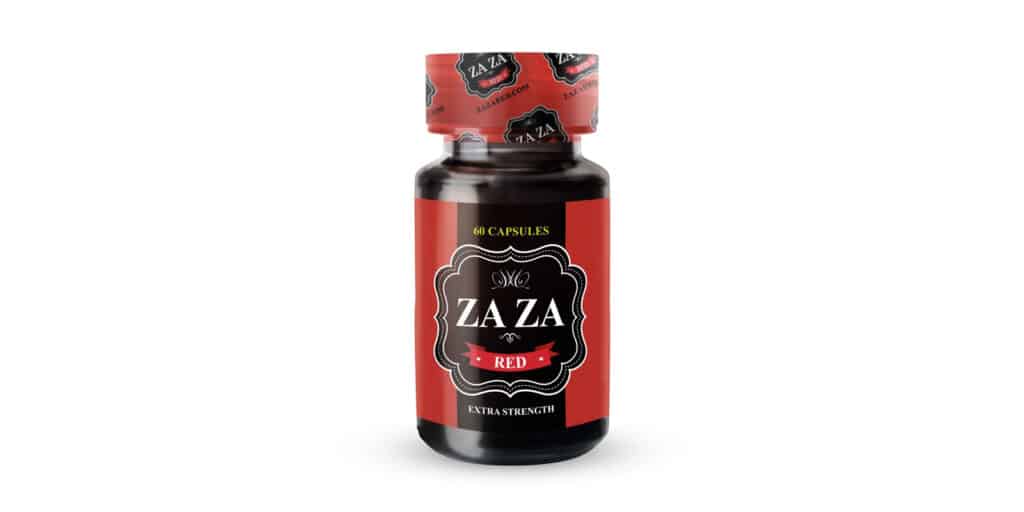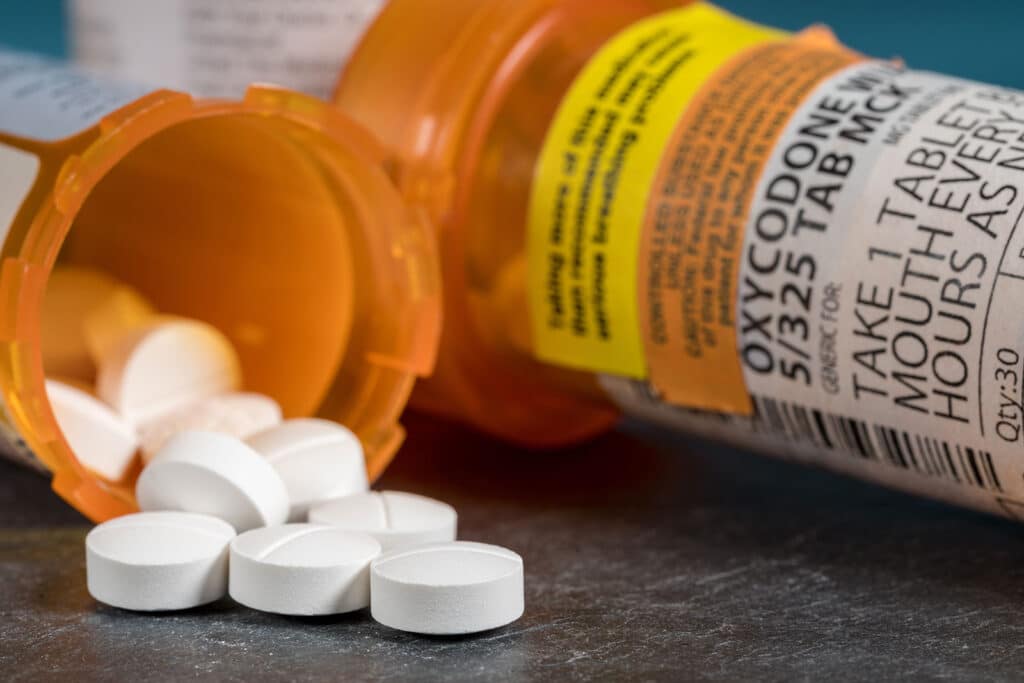Not all dangerous substances come in plastic bags sold by suspicious people on the street. The unfortunate reality is that a lot of highly addictive products can be found in your local stores. Items like Zaza Red are marketed as harmless dietary supplements, yet they can cause consumers to end up dealing with a full-blown addiction. In fact, Zaza Red has become so common lately that many healthcare experts are starting to experience a “Zaza Red Epidemic.” To understand what this substance is and why it’s so dangerous, explore our helpful guide.

Table of Contents
What Is Zaza Red?
Zaza Red is the street name for a variety of products that contain tianeptine. The pills are sold under names including “Za Za Red” and “Tianna.” This atypical tricyclic drug is often prescribed as an antidepressant in Europe and Latin America, but it has never been approved for use in the United States due to its high risk of addiction. This product has not been evaluated by the Food and Drug Administration
Where Zaza Red Comes From
Unfortunately, the unregulated status of tianeptine means that it often gets sold over the counter as a supplement. Usually sold in the form of small, red and white pills, tianeptine has many brand names such as Zaza, Tianaa, and Pegasus. These pills contain a blend of tianeptine and other undisclosed substances. They’re often available at gas stations, convenience stores, smoke shops, and other small retailers. Though Zaza Red is the most common street name, they also go by names such as TD Red, Tia, and gas station heroin.
How Zaza Red Works
Zaza Red affects the brain by moderating serotonin and dopamine production. It activates opioid receptors and causes a rush of euphoria throughout the body. People who use Zaza Red often say that it boosts their mood and helps them feel calm or relaxed. These pills claim to be a dietary supplement that improves brain function. It also causes a wide range of problematic side effects including drowsiness, mental confusion, and difficulty breathing.

Understanding the Appeal of Zaza Red
In the past few years, tianeptine use has skyrocketed. Between 2014 and 2019 alone, Zaza Red abuse has become 24 times more common. Almost no one knew what it was a decade ago, and now one can easily find it for sale in their state. There are several different factors contributing to this issue.
Accessibility
Zaza Red is frequently sold in small shops like gas stations. People can get it without needing a prescription or the ability to contact a drug seller. Instead, they can pick up a dose alongside a bottle of soda or a bag of chips. Since tianeptine is so widespread, many people who would not actively seek out illegal drugs can get curious and end up trying it. The drug’s accessibility means that it frequently ends up trending on social media and attracting new users. Some include a disclaimer stating the vendors are not responsible for any misuse of the product and that it is only available to those over the age of 18; others encourage repeated use.
Legality
Another reason many people have become addicted to Zaza Red is the fact that it is not a controlled substance in most parts of the United States. The Alabama Department of Public Health classified Tianeptine as a Schedule II controlled substance therefore, it is only banned in Michigan, Alabama, Tennessee, Georgia, Indiana, and Ohio. Mississippi became the latest state to enact a ban on tianeptine which will take effect on July 1. Anyone can sell it or possess it without facing consequences. Sadly, many people make the unfortunate mistake of assuming that it’s harmless simply because it’s legal. Since the drug is sold alongside many everyday items, some users don’t realize how dangerous it is when they start using it.
Similarity to Opioids
2018 research found that the majority of people with a tianeptine addiction had a past history of other substance use disorders. Zaza Red’s reputation as “gas station heroin” and “gas station dope,” makes it very appealing to people with opioid use disorders. It functions much the same way as heroin, and since it also activates opioid receptors, it can stave off withdrawal symptoms in people with opioid addictions. This means that many victims of the opioid epidemic are turning to tianeptine as a way to get a fix.

Why Zaza Red Is So Dangerous for Your Health
Zaza Red might be legal, but it’s not harmless. There are many different health risks associated with using Zaza Red. Even if you only use a small amount occasionally, you risk problematic side effects such as:
- Nausea
- Abdominal pain
- Headaches
- Constipation
- Dizziness
At higher doses, Zaza Red becomes even riskier. People who take large amounts can potentially overdose. Tianeptine has been associated with many fatalities. Like traditional opioids, taking too much tianeptine causes difficulty breathing, slow breathing, slow heart rate, unconsciousness, and eventually death. In fact, one of the main reasons that other countries are scaling back on prescribing tianeptine for depression is because it has such a high risk of overdose. In high doses, tianeptine can lead to addiction and other serious health conditions, including respiratory depression and overdose, which can lead to coma or even death directly related to the mu-opioid receptors effect.
In addition to the risks associated with single-time use of tianeptine, there are also dangers from repeated use. If you take this substance regularly, you can end up dealing with a substance use disorder. You’ll find yourself engaging in risky behavior, losing control of your ability to moderate usage, and feeling physically ill if you don’t get regular tianeptine doses.
For example, one woman interviewed by Vice Media explained that within seven hours of taking her last dose of Zaza Red, she’d end up puking, shivering, and dealing with other symptoms of withdrawal. To avoid withdrawal, she’d purchase Zaza Red instead of food or other essentials. Other users report feeling suicidal while withdrawing or even taking fentanyl to help with Zaza Red withdrawal.

Zaza Red vs. Traditional Opioids
Zaza Red is often called gas station heroin due to its similarity to heroin, Xanax, and other opioids. It is true that both interact with the opioid receptors in the brain and cause a rush of relaxation, calmness, happiness, and joy. These feelings are so desirable that it is very easy to become addicted to them. Without tianeptine or opioids, an addict may feel intense anxiety, depression, diarrhea, vomiting, and tremors. Many people find that taking Zaza Red can stave off opioid withdrawal and vice versa.
However, at a chemical level, these substances are a little different. Zaza Red is a tricyclic antidepressant that works by blocking the breakdown of certain neurotransmitters, so substances like serotonin build up in the brain. Meanwhile, opioids bind directly to opioid receptors in the brain and replace certain neurotransmitters. This means that Zaza Reds can cause some unpredictable effects not found in traditional opioids. Furthermore, most gas station brands of tianeptine have other additives that can cause even more unpleasant side effects.
Addressing the Zaza Red Epidemic
Tianeptine use has become so widespread that many experts have started calling it an epidemic. Since 2021, three states have rushed to ban tianeptine. However, it may take some time before federal legislation catches up. In the meantime, the FDA has started a campaign to warn people about Zaza Red.
Public safety announcements caution that tianeptine isn’t FDA-approved for consumption and comes with intense risks for addiction. The CDC has also released bulletins to advise users that tianeptine use can lead to dependence, withdrawal, or overdose. Most of the steps taken to address the Zaza Red epidemic have focused on warning the public of the dangers. Since so many people might see these substances for sale at their local store and get curious, educating people can help to reduce the risks of addiction or abuse.

How to Help Those Addicted to Zaza Red
If you or a loved one is dealing with a Zaza Red addiction, it’s important to seek medical assistance. Long-term use of this drug can cause a variety of health issues including malnutrition, digestive issues, anxiety, depression, and even fatal overdoses. There are several different treatment options for people dealing with Zaza Red addiction.
Rehab and Therapy
The most effective treatment for tianeptine addiction is a substance use treatment program. Inpatient or outpatient rehab can help you get the support, encouragement, and assistance you need to overcome addiction. Most programs will include intensive therapy sessions to help you process and understand your addiction. Your therapist will assist you with identifying triggers and finding coping skills to avoid giving in to triggers.
Medication-Assisted Treatment
Tianeptine abuse has both a physical and mental side. Even patients who are mentally ready to quit using Zaza Red may struggle to break their physical dependency. However, some people have found relief with medication-assisted treatment. This treatment involves a patient taking methadone, naltrexone, or another substance that helps reduce cravings. The medication can prevent withdrawal and reduce the pleasurability of taking tianeptine, so it’s easier to quit abusing Zaza Red.
Garden State Treatment Center Is Here to Help
At Garden State Treatment Center, we have the expertise needed to help with this unique type of addiction. Our professionals and addiction treatment specialists ensure you stay comfortable during withdrawal and get the care you need to overcome Zaza Red addiction. To get started, contact our team today.
Published on: 2023-06-27
Updated on: 2025-04-29



